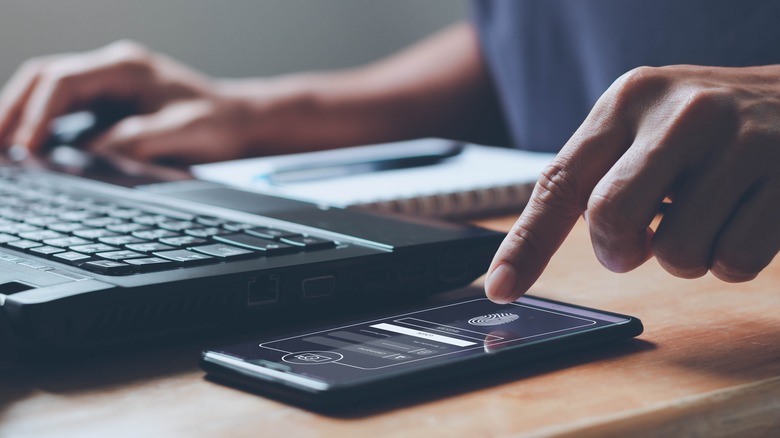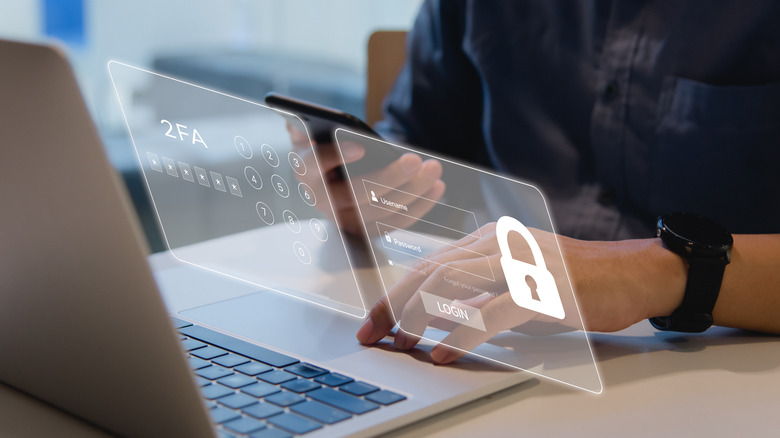What's The Difference Between 2FA And MFA?
It seems that just about every social media platform requires users to utilize two-factor or multi-factor authentication when logging in. Even Apple added a 2FA feature for iPhone users to protect their accounts, among many others. Thanks to all of the advancements in technology and bad actors being more creative, a simple password isn't good enough anymore. Users need additional layers of protection to keep their data safe, and that's where having multiple layers of protection and logging in come in handy.
While everybody's undoubtedly using 2FA and MFA options for everything from social media to online banking, the majority of users likely don't know the difference between the two. After all, aren't two factors inherently the same as multiple? Simply put, 2FA is MFA, but MFA is not 2FA. Knowing the difference between the two forms of authentication and different categories of MFA will help improve account security, and help users choose the right kind of authentication in the future.
Know your factors of security
Before knowing the difference between two-factor and multi-factor authentication, it's important to know that there are different categories of factors, what those categories are, and how they're helpful. Users are familiar with security questions, PINS, and even lock patterns. These are knowledge-based factors: something that the user knows. This is the least secure form of authentication because anyone who discovers the answer can gain access to an account.
A possession factor is more secure, as it requires the user to have something, well, in their possession. Something like a mobile app and a security key is a possession factor. The user has to have direct contact with this factor at the time of logging into an account, which is difficult for an intruder to have. Then there's the inherence factor, which is more secure than the other two.
Biometric scans are inherence factors. These are some of the most secure for users because duplicating a person's fingerprint, face ID, or iris scan is difficult for hackers. Lastly, there's the context factor, which is authentication through a user's location. Authenticating via location is rare, but some companies require it with their software and hardware.
All about two-factor authentication
Just as the name implies, two-factor authentication requires exactly two different authentication layers to confirm a user is who they say they are when trying to log in to an account. The first factor is merely their username and password. The second form of authentication can be anything from a code sent via SMS, to a security question. Two-factor authentication can use the same category of verification for both layers. For example, the first and second layers of authentication can be knowledge-based (password and a PIN).
Multi-factor authentication, on the other hand, requires two or more forms of verification, with each factor typically falling into a different category. Users can't use a security question if they already input their password. Instead, they have to utilize a possession factor, such as a mobile app, or an inherent factor like their fingerprint. Using multiple forms of complex evidence for identification decreases the chances of intrusion.
Users should enable two-factor authentication whenever possible, but if MFA is available, it will provide better security. A simple username and password don't cut it anymore for security, so utilizing additional layers of protection keeps unwanted users from accessing personal data. To make 2FA more secure, opt to use verification from different categories. Whenever possible, use as many forms of authentication as possible.


